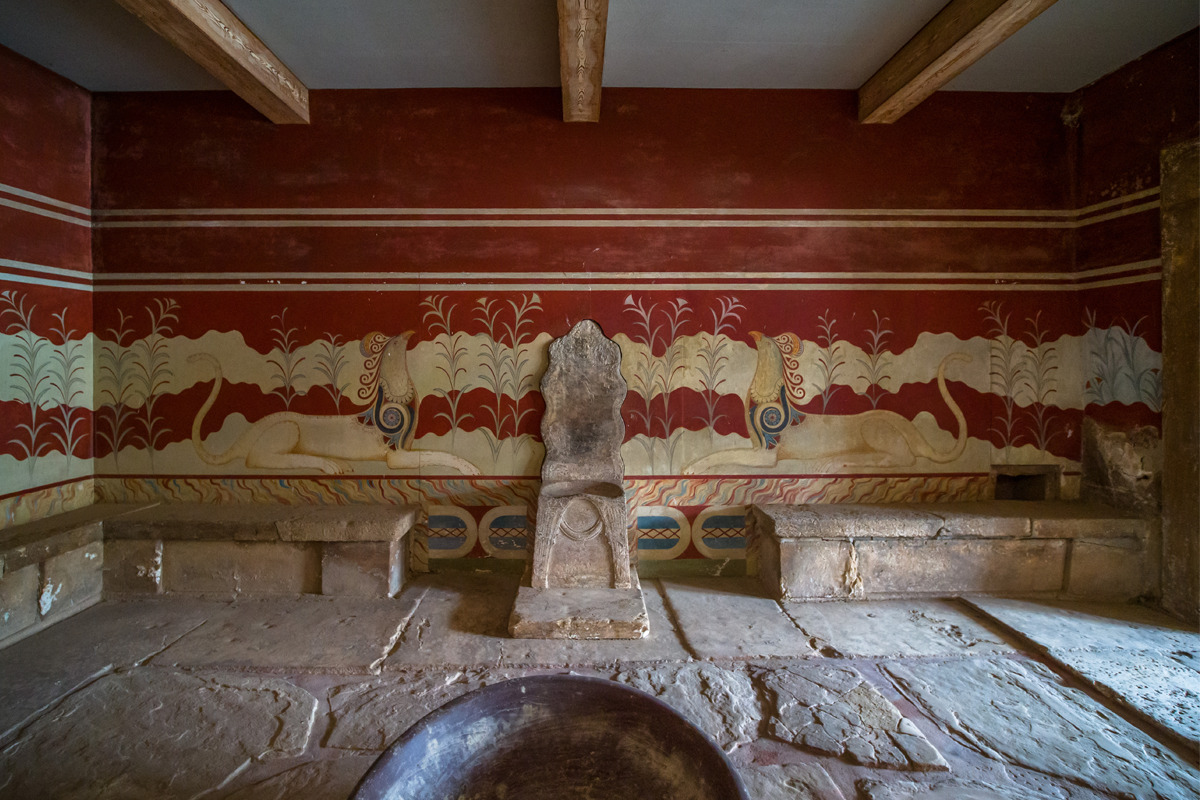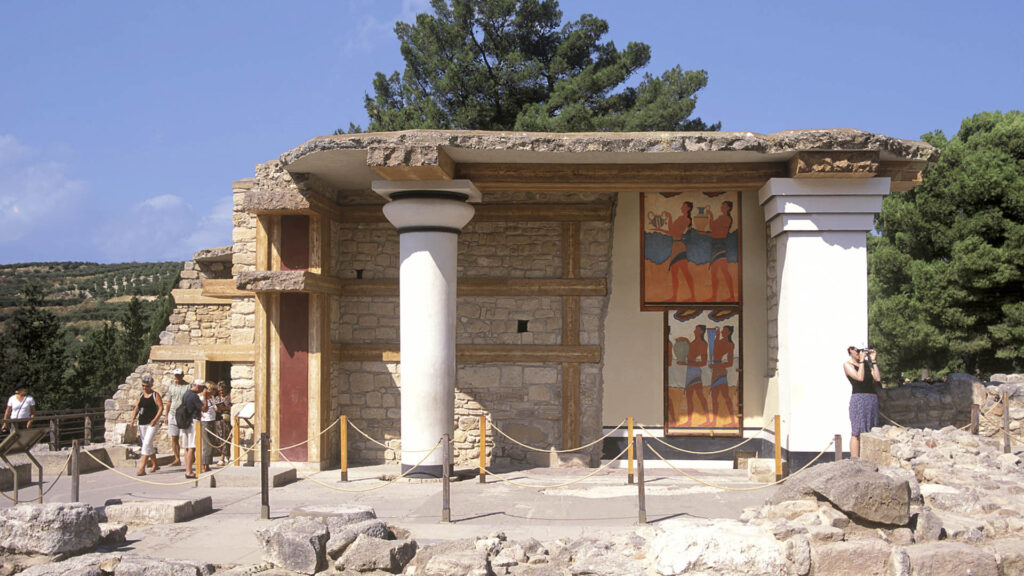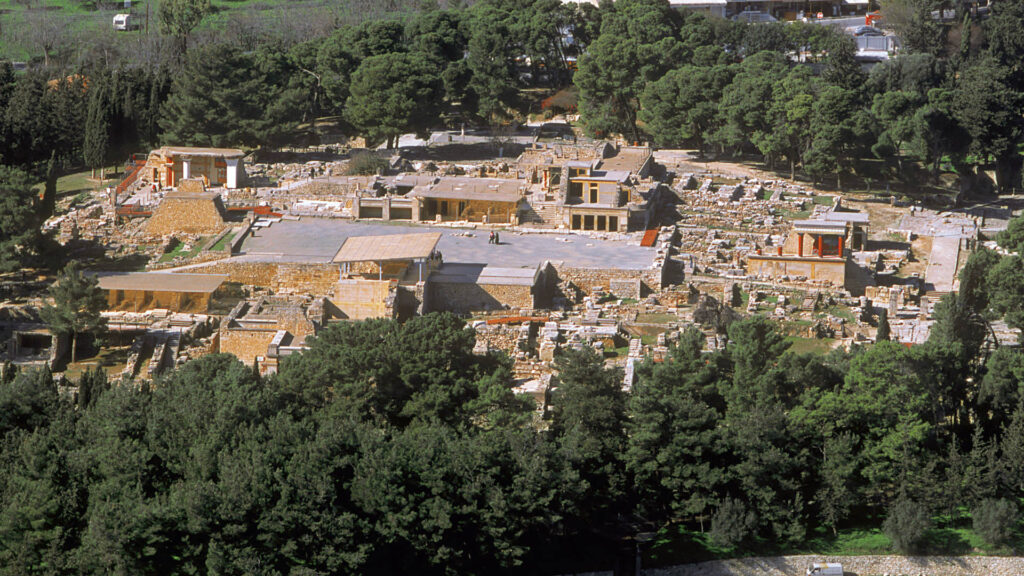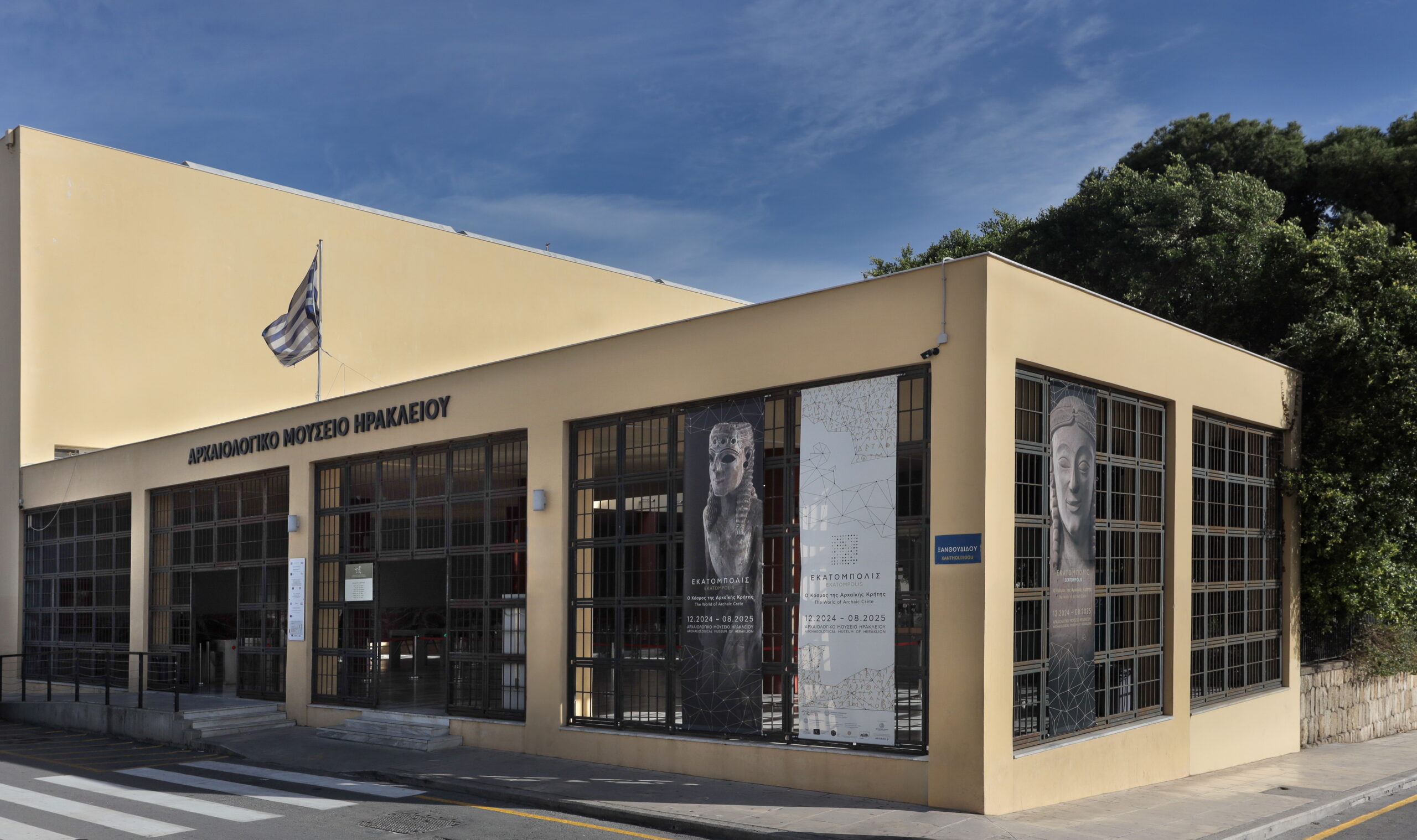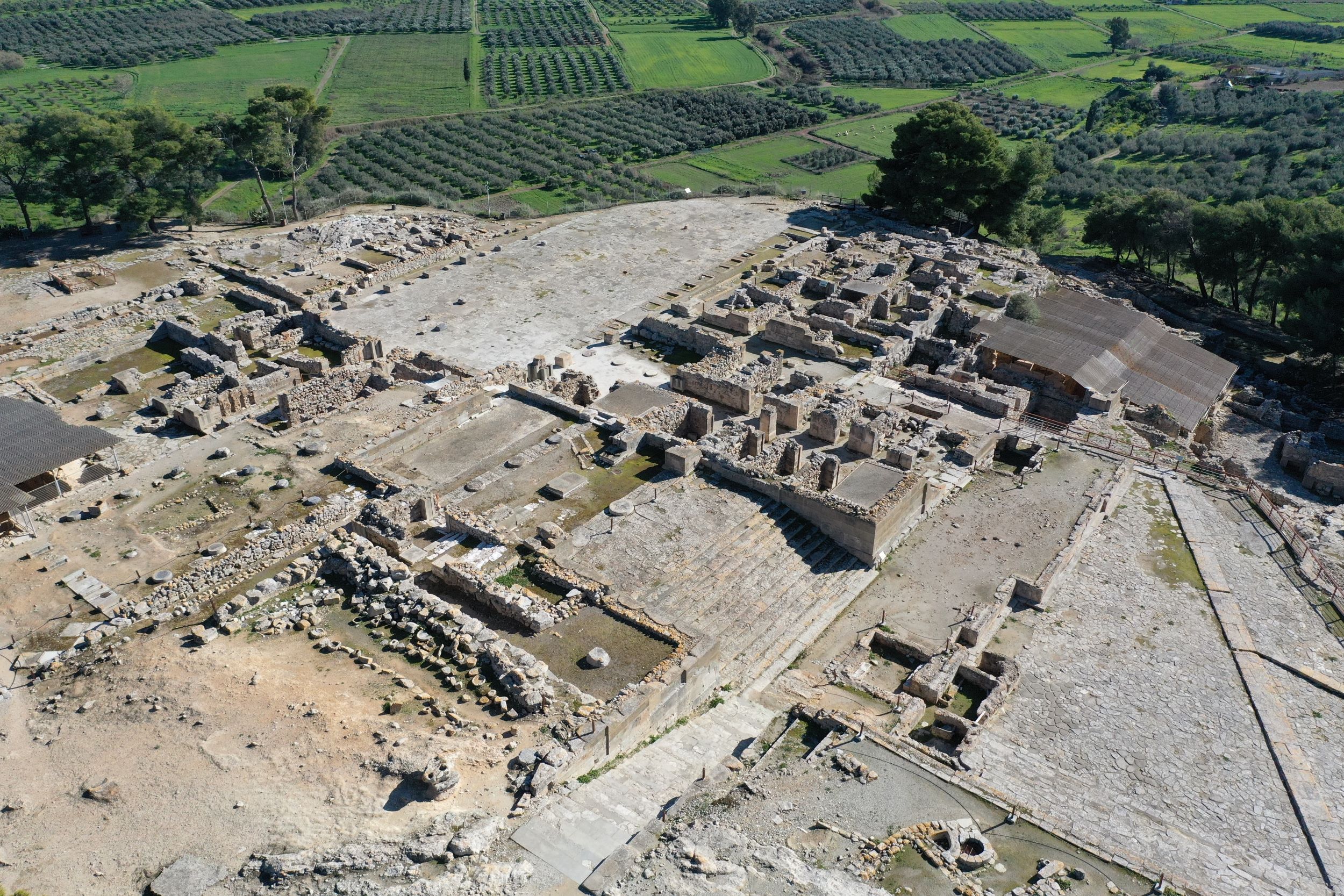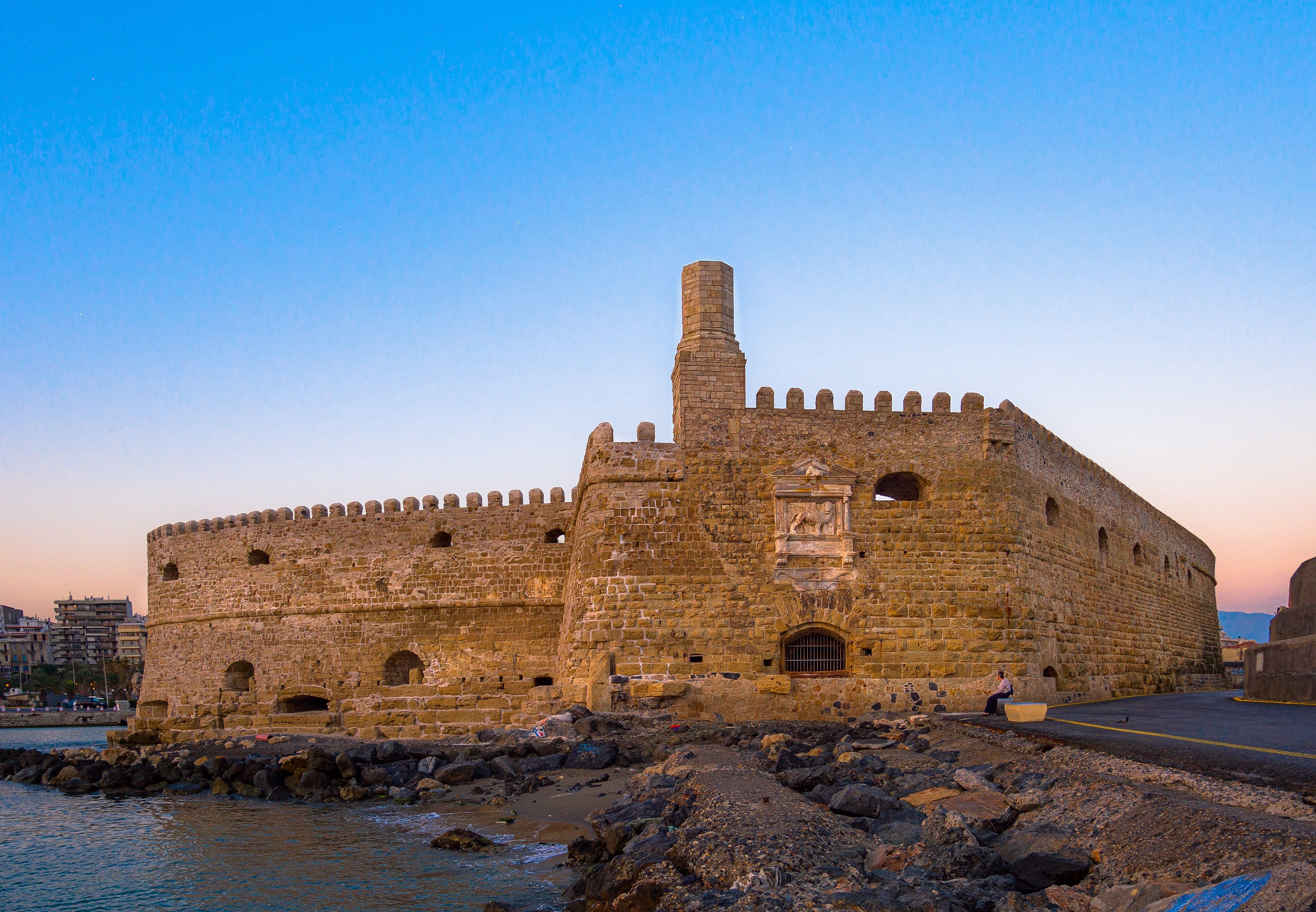Deeply rooted in Greek mythology, the palace of Knossos was associated with the myths involving the Labyrinth and the Minotaur, as well as Daedalus and Icarus, and, of course, the legendary king Minos, son of Zeus and Europa.
Perhaps it was fate, then, that another Minos discovered Knossos: the merchant and antiquarian Minos Kalokairinos, who carried out the first excavations on the Kephala hill, in 1878. The first systematic excavations, however, were undertaken by the British archaeologist Arthur Evans during 1900-1931, unearthing the palace and a large part of the town.
The indisputable centre of the great Aegean-Minoan civilisation, Knossos was inhabited from the Neolithic until the Roman times. However, its heyday was in the Minoan period (2000-1350 BC), with the first palace erected around 2000-1900 BC. After its destruction by an earthquake in 1700 BC, the resourceful Minoans raised an even grander palace in its place , the largest in Crete.
Occupying an area of 22,000m², surrounded by olive trees, vineyards and cypresses, the multi-storey palace looks like an actual town. With a complex architectural structure reminiscent of the mythical Labyrinth, it extends over four wings surrounding the spacious central courtyard and consisting of multiple rooms: the throne room with its alabaster throne, the royal apartments decorated with magnificent murals illustrating brooding griffins and playful dolphins, ceremonial and banqueting halls, sanctuaries and open courtyards, storerooms and treasuries, workshops and lustral basins, even a stone theatre.
Evans carried out extensive restoration work, both architectural and decorative. His interventions were considered controversial by many, but it is most likely that without them we would not all be considering the red columns as the trademark of Minoan Knossos. An integral part of the monument and its history, they contribute to the irresistible fascination that Knossos has been exerting on visitors throughout history, helping them reconstruct in their imagination life in the lavish Minoan palaces at the time of their greatest glory.
The palace of Knossos served as an administrative, economic, and religious center, designed to meet the diverse needs and functions of a stratified society. Owing to its outstanding significance, it was recently inscribed on the UNESCO World Heritage List, together with five other Minoan palaces.
Access
71409
Knossos, Heraklion
By city bus, 20 minutes from the city of Heraklion
15 minutes from the city of Heraklion
Opening hours
April 1 – August 31
Daily: 08:00 – 20:00
September 1 – 15
Daily: 08:00 – 19:30
September 16 – 30
Daily: 08:00 – 19:00
October 1 – 15
Daily: 08:00 – 18:30
October 16 – 31
Daily: 08:00 – 18:00
November 1 – March 31
Daily: 08:00 – 17:00
The site remains closed on the following dates and public holidays: January 1, March 25, May 1, Easter Sunday, December 25 & 26.
Tickets
Full: €20,00
Reduced: €10,00
Amenities
Contact
Archaeological Site of Knossos
Τ: +30 2810 231940
E: palaceknossos@gmail.com


